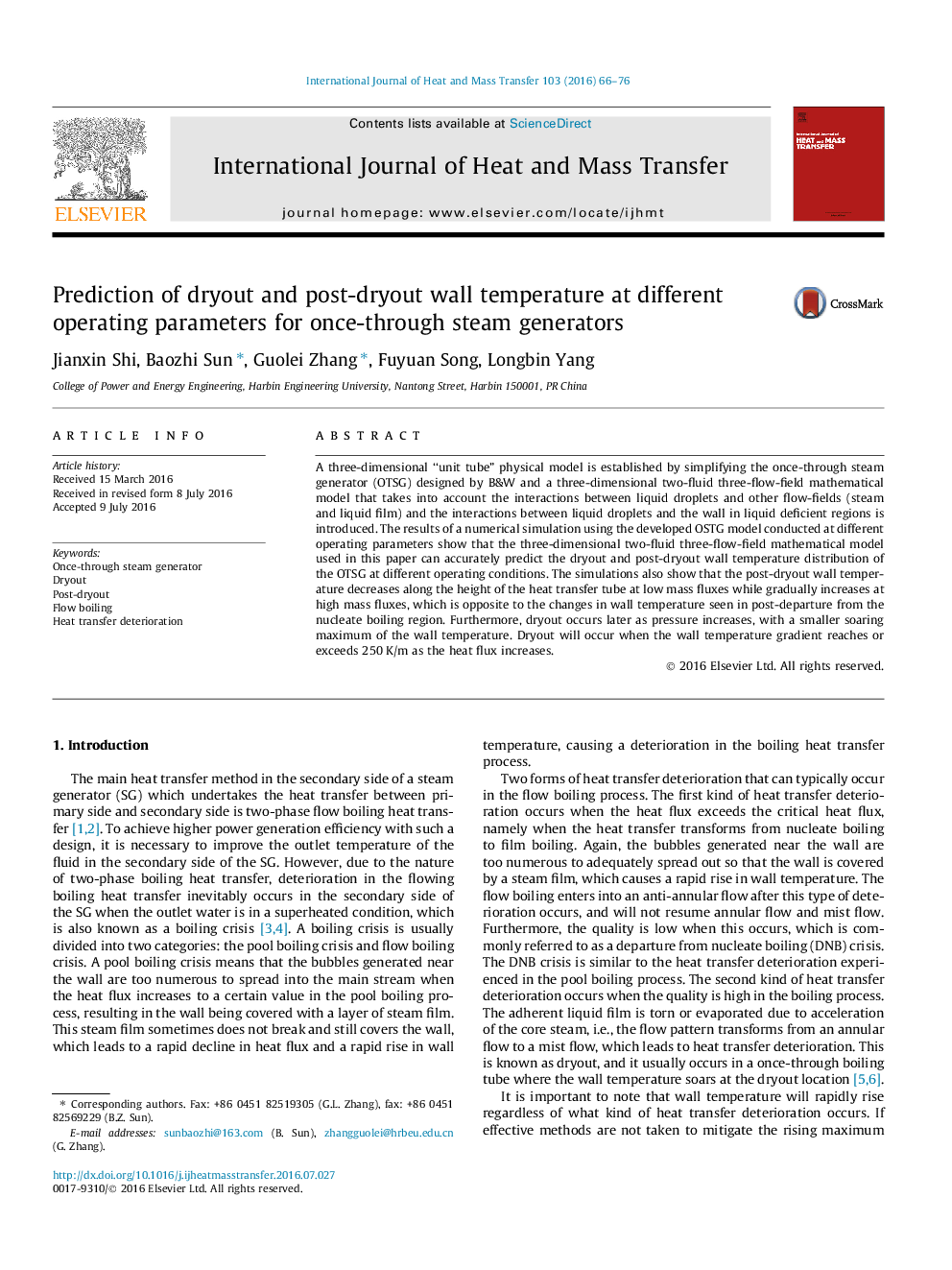| Article ID | Journal | Published Year | Pages | File Type |
|---|---|---|---|---|
| 7054943 | International Journal of Heat and Mass Transfer | 2016 | 11 Pages |
Abstract
A three-dimensional “unit tube” physical model is established by simplifying the once-through steam generator (OTSG) designed by B&W and a three-dimensional two-fluid three-flow-field mathematical model that takes into account the interactions between liquid droplets and other flow-fields (steam and liquid film) and the interactions between liquid droplets and the wall in liquid deficient regions is introduced. The results of a numerical simulation using the developed OSTG model conducted at different operating parameters show that the three-dimensional two-fluid three-flow-field mathematical model used in this paper can accurately predict the dryout and post-dryout wall temperature distribution of the OTSG at different operating conditions. The simulations also show that the post-dryout wall temperature decreases along the height of the heat transfer tube at low mass fluxes while gradually increases at high mass fluxes, which is opposite to the changes in wall temperature seen in post-departure from the nucleate boiling region. Furthermore, dryout occurs later as pressure increases, with a smaller soaring maximum of the wall temperature. Dryout will occur when the wall temperature gradient reaches or exceeds 250Â K/m as the heat flux increases.
Related Topics
Physical Sciences and Engineering
Chemical Engineering
Fluid Flow and Transfer Processes
Authors
Jianxin Shi, Baozhi Sun, Guolei Zhang, Fuyuan Song, Longbin Yang,
